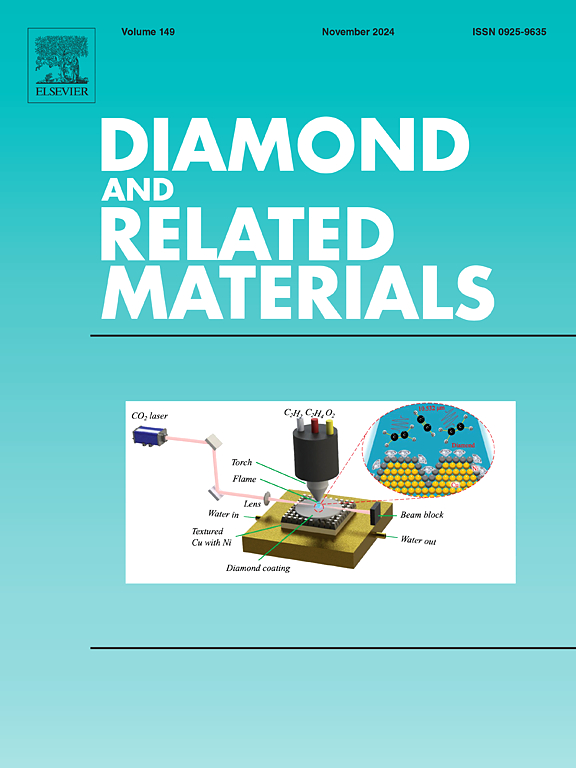A 3–8 decoder of terahertz metamaterials and its sensing application
IF 4.3
3区 材料科学
Q2 MATERIALS SCIENCE, COATINGS & FILMS
引用次数: 0
Abstract
A 3–8 decoder based on terahertz metamaterial was proposed for the first time, which can achieve both 3–8 decoding function and dual band selectable 2–4 decoding function. The function of this device mainly relies on VO2 acting as a conductor or insulator. The finite integration in time domain (FITD) method was used to simulate and optimize the performance of the metamaterial absorber (MMA), and its working mechanism was analyzed through electric field distribution diagram and equivalent circuit model (ECM). When the device is used as a 3–8 decoder, the maximum modulation depth (MD) is 99.60 %, the minimum extinction ratio (ER) is 17.7 dB, the maximum insertion loss (IL) is 0.76 dB, and it has the property of being insensitive to the incident angle, with stable decoding ability. In addition, the device can also be used as a sensor with a refractive index sensitivity (S) of 0.55 THz/RIU, a quality factor (Q) of 24.714, and a FOM of 3.93, demonstrating excellent sensing capabilities. This work provides new ideas for improving the decoding capability of terahertz devices and designing dynamic devices.

一种3-8太赫兹超材料解码器及其传感应用
首次提出了一种基于太赫兹超材料的3-8译码器,既能实现3-8译码功能,又能实现双波段可选的2-4译码功能。该装置的功能主要依赖于VO2作为导体或绝缘体。采用时域有限积分(FITD)方法对超材料吸收体(MMA)的性能进行了仿真和优化,并通过电场分布图和等效电路模型(ECM)分析了其工作机理。当器件用作3-8解码器时,最大调制深度(MD)为99.60%,最小消光比(ER)为17.7 dB,最大插入损耗(IL)为0.76 dB,并且具有对入射角不敏感的特性,具有稳定的解码能力。此外,该器件还可以作为传感器使用,折射率灵敏度(S)为0.55 THz/RIU,质量因子(Q)为24.714,FOM为3.93RIU−1,具有出色的传感能力。该工作为提高太赫兹器件的解码能力和设计动态器件提供了新的思路。
本文章由计算机程序翻译,如有差异,请以英文原文为准。
求助全文
约1分钟内获得全文
求助全文
来源期刊

Diamond and Related Materials
工程技术-材料科学:综合
CiteScore
6.00
自引率
14.60%
发文量
702
审稿时长
2.1 months
期刊介绍:
DRM is a leading international journal that publishes new fundamental and applied research on all forms of diamond, the integration of diamond with other advanced materials and development of technologies exploiting diamond. The synthesis, characterization and processing of single crystal diamond, polycrystalline films, nanodiamond powders and heterostructures with other advanced materials are encouraged topics for technical and review articles. In addition to diamond, the journal publishes manuscripts on the synthesis, characterization and application of other related materials including diamond-like carbons, carbon nanotubes, graphene, and boron and carbon nitrides. Articles are sought on the chemical functionalization of diamond and related materials as well as their use in electrochemistry, energy storage and conversion, chemical and biological sensing, imaging, thermal management, photonic and quantum applications, electron emission and electronic devices.
The International Conference on Diamond and Carbon Materials has evolved into the largest and most well attended forum in the field of diamond, providing a forum to showcase the latest results in the science and technology of diamond and other carbon materials such as carbon nanotubes, graphene, and diamond-like carbon. Run annually in association with Diamond and Related Materials the conference provides junior and established researchers the opportunity to exchange the latest results ranging from fundamental physical and chemical concepts to applied research focusing on the next generation carbon-based devices.
 求助内容:
求助内容: 应助结果提醒方式:
应助结果提醒方式:


